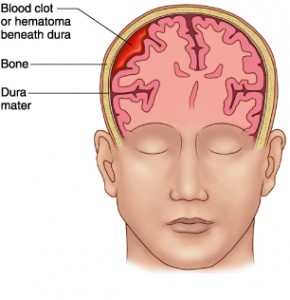Roger Ailes Dies After Head Injury
Former Fox News President Roger Ailes has died at the age of 77. His wife, Elizabeth Ailes, made the following statement:
“I am profoundly sad and heartbroken to report that my husband, Roger Ailes, passed away this morning.”
“Roger was a loving husband to me, to his son Zachary, and a loyal friend to many. He was also a patriot, profoundly grateful to live in a country that gave him so much opportunity to work hard, to rise — and to give back.”
It has been reported that Ailes fell at his Florida home eight days before his death. According to TMZ, Ailes fell unconscious and his condition went downhill. Our sources say he was put into an induced coma and died Thursday morning. A preliminary coroner’s report released this evening says that Ailes died from complications of a subdural hematoma caused by a head injury.
Ailes also suffered from hemophilia, a bleeding disorder that slows the blood clotting process. People with this condition experience prolonged bleeding or oozing following an injury, surgery, or having a tooth pulled. Serious complications can result from bleeding into the joints, muscles, brain, or other internal organs.
What is a Subdural Hematoma?
 A subdural hematoma is caused by bleeding that takes place due to the rupture of one or more of the blood vessels (typically veins) that travel through the subdural space, located between the dura mater, which adheres to the skull, and the arachnoid mater enveloping the brain. Acute bleeds develop after high speed acceleration or deceleration injuries. Acute subdural hematomas are among the deadliest of all head injuries. The bleeding fills the brain area very rapidly, compressing brain tissue.
A subdural hematoma is caused by bleeding that takes place due to the rupture of one or more of the blood vessels (typically veins) that travel through the subdural space, located between the dura mater, which adheres to the skull, and the arachnoid mater enveloping the brain. Acute bleeds develop after high speed acceleration or deceleration injuries. Acute subdural hematomas are among the deadliest of all head injuries. The bleeding fills the brain area very rapidly, compressing brain tissue.
Symptoms are similar to those of anyone having a stroke:
- Confused speech
- Difficulty with balance or walking
- Headache
- Lethargy or confusion
- Loss of consciousness
- Nausea and vomiting
- Numbness
- Seizures
- Slurred speech
- Visusal disturbances
- Weakness
How big an issue are falls in the elderly?
Falls in the elderly is a major health issue, especially as the baby-boomer generation ages.
How big is the problem?
According to the CDC:
- One out of five falls causes a serious injury such as broken bones or a head injury.
- Each year, 2.8 million older people are treated in emergency departments for fall injuries.
- Over 800,000 patients a year are hospitalized because of a fall injury, most often because of a head injury or hip fracture.
- Each year at least 300,000 older people are hospitalized for hip fractures.
- More than 95% of hip fractures are caused by falling,7 usually by falling sideways.
- Falls are the most common cause of traumatic brain injuries (TBI).
- Adjusted for inflation, the direct medical costs for fall injuries are $31 billion annually.10 Hospital costs account for two-thirds of the total.
What outcomes are linked to falls?
- Twenty to thirty percent of people who fall suffer moderate to severe injuries such as lacerations, hip fractures, or head traumas. These injuries can make it hard to get around or live independently, and increase the risk of early death.
- Falls are the most common cause of traumatic brain injuries (TBI).
- In 2000, 46% of fatal falls among older adults were due to TBI.
- Most fractures among older adults are caused by falls. The most common are fractures of the spine, hip, forearm, leg, ankle, pelvis, upper arm, and hand.
- Many people who fall, even if they are not injured, develop a fear of falling. This fear may cause them to limit their activities, which leads to reduced mobility and loss of physical fitness, and in turn increases their actual risk of falling.
Who is at risk?
- Men are more likely to die from a fall. After adjusting for age, the fall fatality rate in 2004 was 49% higher for men than for women.
- Women are 67% more likely than men to have a nonfatal fall injury, with fall-related fractures twice as high for women as for men. Women account for over 70% of hospital admissions for hip fractures.
- The risk of being seriously injured in a fall increases with age. Adults over 85 were four to five times more likely to fall than adults 65 to 74.
- Nearly 85% of deaths from falls in 2004 were among people 75 and older.
- People 75 and older who fall are four to five times more likely to be admitted to a long-term care facility for a year or longer.
- There is little difference in fatal fall rates between whites and blacks, ages 65 to 74 . After age 75, white men have the highest fatality rates, followed by white women, black men, and black women.
How can older adults prevent falls?
Older adults can take several steps to protect their independence and reduce their risk of falling. They can:
- Exercise regularly; exercise programs like Tai Chi that increase strength and improve balance are especially good.
- Ask their doctor or pharmacist to review their medicines–both prescription and over-the counter–to reduce side effects and interactions.
- Have their eyes checked by an eye doctor at least once a year.
- Improve the lighting in their home, and outdoors on walkways around the home.
- Reduce hazards inside and outside their home that can lead to falls.



























0 comments